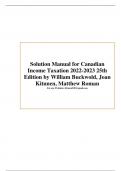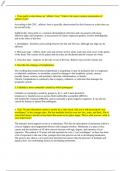Exam (elaborations)
Solution Manual for Canadian Income Taxation 2022-2023 25th Edition by William Buckwold, Joan Kitunen, Matthew Roman A+
- Course
- Institution
Solution Manual for Canadian Income Taxation 2022-2023 25th Edition by William Buckwold, Joan Kitunen, Matthew Roman A+
[Show more]




